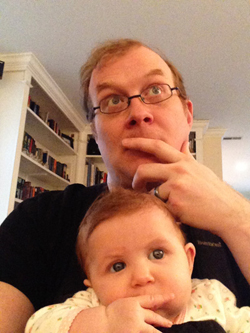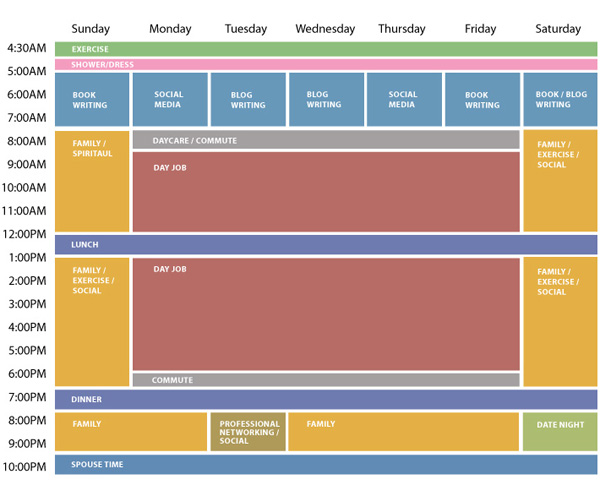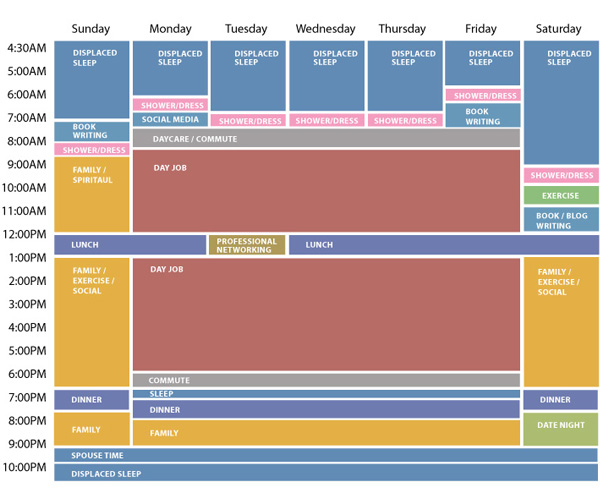 Coming back to my blog after a babymoon, I thought it would be interesting to touch on a topic that has been prominent in my mind, and something that I know many people struggle with: how to manage a job, a family, and personal time for creative expression.
Coming back to my blog after a babymoon, I thought it would be interesting to touch on a topic that has been prominent in my mind, and something that I know many people struggle with: how to manage a job, a family, and personal time for creative expression.
Most people have a 9 to 5 day job (if they’re lucky; for many folks, it’s longer). Then, if they can muster the energy, they carve time out for their personal projects around their bumpers of sleep. Be it late in the evening or early in the morning they must preserve a time for creativity.

For me, as a new father to an infant, my world has suddenly dramatically shifted from focusing on my own personal projects to ‘how much sleep can I recoup‘ or ‘when can I have a walk with my wife alone’. My energy and inspiration has gone through a dramatic reality check and I’ve had to evolve my discipline and schedule to meet the challenges of managing a baby. Simultaneously, as all parents know, I’ve been exposed to a new level of inspiration and love that has pushed me further to create.
To help myself try to balance everything, I created an ideal schedule to serve as a starting point, a foundation to help keep my work-life balance in order.

Schedule Foundation
While this schedule may be my ideal, reality has forced me to move things around. For example, I’ve recently been shuffling my professional networking and social time to adapt to the baby’s sleep schedule. While it used to be on Tuesday evenings, recently, I try to schedule this time over lunch, or on a night when my wife has more flexibility in time to take care of our daughter. However, in moving one activity, I try not to steal time from another. So, if I need to have 2 or 3 networking or social events in one week, I then need to be accountable for the time that I didn’t have with my family and I have to shift time the following week to balance out the month.

Schedule Reality
Currently, with my new fatherhood responsibilities, my biggest challenge has been managing my lack of sleep. While this exhaustion has made getting up early to exercise or carving out time for writing difficult, having a foundation schedule has helped me keep reasonable short term goals. And now, as my daughter is getting a little older and settling into a routine, hopefully I will be able to as well.
Most importantly, despite my creative world being turned upside down, I’ve got one of the most inspiring little creatures at my fingertips now!


 To write about the plot outline process, I had to carefully balance not giving away every plot-line element in my current book while explaining how I landed on it’s structure. So, in order to shape a dialogue around this topic, I decided to dissect an existing story and re-tell it from a different character’s perspective. This technique has been used on many well known books and movies– it’s called the
To write about the plot outline process, I had to carefully balance not giving away every plot-line element in my current book while explaining how I landed on it’s structure. So, in order to shape a dialogue around this topic, I decided to dissect an existing story and re-tell it from a different character’s perspective. This technique has been used on many well known books and movies– it’s called the  There are several ways to plan writing a story as a First Draft. Some people have a clear idea of what tale they want to spin, they write it, and then they find a way to publish it. Other writers start by testing their market, and then writing a story to reach their specific target audience. In my case, I am pursuing a hydrid approach- we’ll see how it works… I’m still trying to figure out the right balance.
There are several ways to plan writing a story as a First Draft. Some people have a clear idea of what tale they want to spin, they write it, and then they find a way to publish it. Other writers start by testing their market, and then writing a story to reach their specific target audience. In my case, I am pursuing a hydrid approach- we’ll see how it works… I’m still trying to figure out the right balance.

